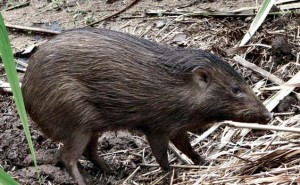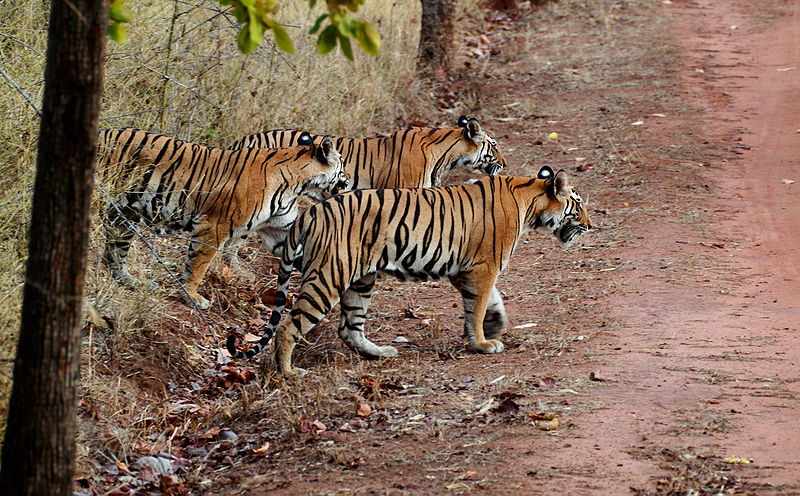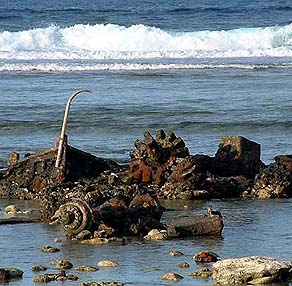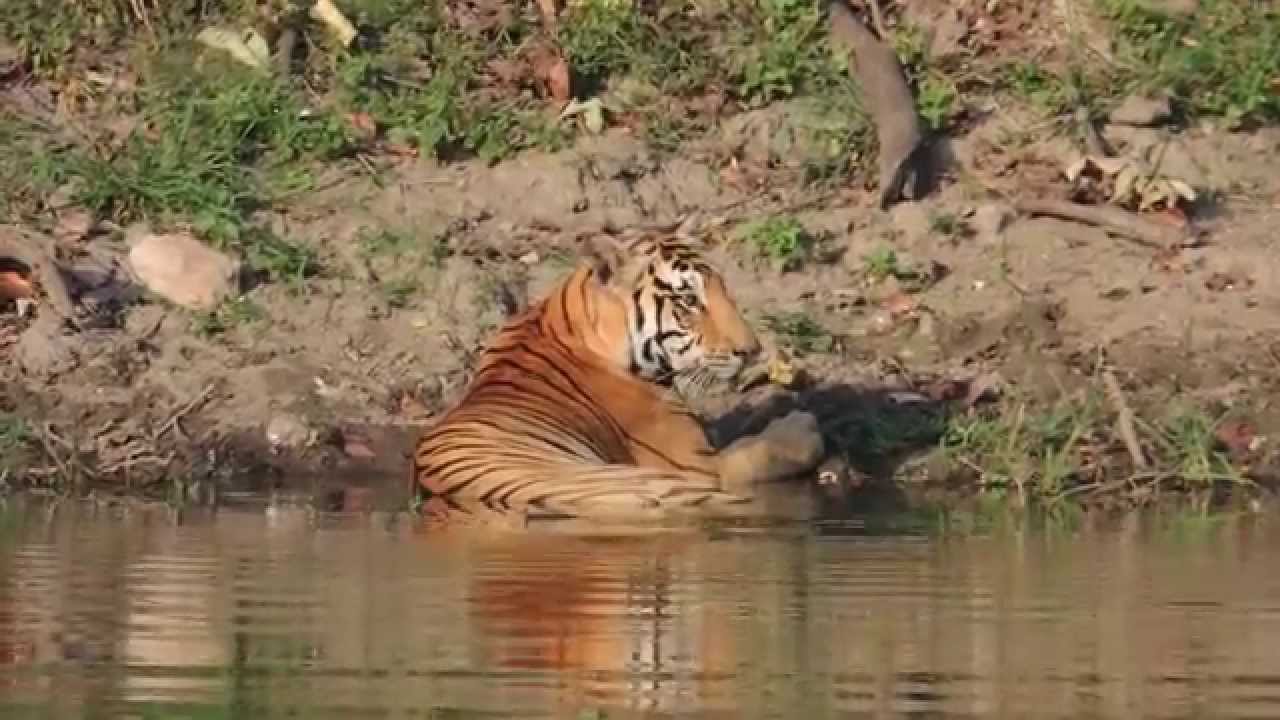 Name – Pygmy Hog (Porcula salvania)
Name – Pygmy Hog (Porcula salvania)
World’s smallest and rarest wild squid or pig.
What do they look like?
Like any other pig, only smaller in size or like any other mole, just bigger in size! They are bullet shaped and just 25 cms tall.
Where are they found in India?
The population of pygmy hogs in the wild is confined to only Manas Tiger Reserve in Assam, in the present. But in the past they were widely distributed in the wet grasslands of the Himalayan foothills stretching from Uttar Pradesh to Assam, through Nepal terai and Bengal duars.
What is their Conservation status?
IUCN has listed them as Critically Endangered. They are also listed in Schedule I of the Indian Wildlife (Protection) Act.
In 1961 pygmy hogs were thought to be extinct, but they were accidently rediscovered in 1971 in Assam in a local tea market.
It was only in 1978 though that a census was carried out that showed 5 major pygmy hog populations. Unfortunately due to lack of substantial conservation efforts out of five only one population was left.
In 1996 captive breeding in Manas reserve was started but the animals could not be released into the wild because there were no habitats suited for them. Finally between 2008 and 2010 35 of the pygmy hogs bred in captivity were released in Sonai Rupai Wildlife Sanctuary in Assam where they have settled.
Why are they called sensitive indicator species?
Pygmy hogs are termed to be sensitive indicator species, because a decline in their population indirectly shows that there is something wrong with the habitat. Animals like the rhinoceros, wild boars etc. will not die out instantly if the habitat has degraded, but pygmy hogs will find it difficult to survive even if there is slight disbalance in the biodiversity of the ecosystem. Thus, their critically endangered status shows that the entire area where they are found is a threatened habitat.
So, saving the tiny pygmy hogs can save the entire ecosystem then?
Certainly. Pygmy hogs stay in grasslands. They need thick cover to hide and also build their grass nests. What grasslands do mostly, apart from providing fodder to herbivorous animals, is help protect forest lands from floods and create a reservoir. During monsoons, the grasslands absorb water which then slowly percolates as ground water and also flows towards the rivers and streams.
If there are no grasslands, there is soil erosion, flooding, and no particular retention of water. The ecosystem automatically starts to collapse.
Therefore, if the pygmy hog population flourishes, it indicates there is ample grassland in the habitat and therefore the entire biodiversity of the ecosystem is flourishing.
Also, the habitat suited to pygmy hogs is equally crucial for the survival of several other endangered species such as the one-horned rhinoceros, tiger, swamp deer, wild buffalo, hispid hare and Bengal florican.
What are the threats to their population?
- Human encroachments
- Need for agriculture lands
- Burning of grasslands
- Planting trees in grasslands
- Cattle grazing
- Flood control schemes
Is there any organisation I can get in touch with to know more about Pygmy Hogs and help with their conservation?
Dr Goutam Narayan, is the Project Director of Pygmy Hog Conservation Programme (PHCP).
The programme is sponsored by the Durrell Wildlife Conservation Trust (DWCT). Famous naturalist and author Gerald Durrell encouraged a tea planter, to breed them in captivity after they were accidentally discovered.
The conservation programme is currently conducted under a memorandum of understanding between IUCN/SSC Wild Pigs Specialist Group, DWCT, the Forest Department, Government of Assam, and the Union Ministry of Environment and Forests.
Locally, the programme is managed by EcoSystems-India, a trust for biodiversity conservation.
– Atula Gupta
Article reference: Thehindubusinessline
Related Stories:





When Man starts tresspassing upon habitats of animals, the mute animals are helpless – they cannot defend their territories against so powerful a gunda – come to think of it, we behave like underworld goons when it comes to the animal world – no wonder the sensitive ones are threatened, endangered, and on the verge of extinction.
Very well written article elucidating this point.
You are absolutely right. When the choice is between farmland and grassland, no one will think twice about saving the grassland. The struggle of sensitive species like pygmy hogs make the future look very bleak for mankind’s survival.